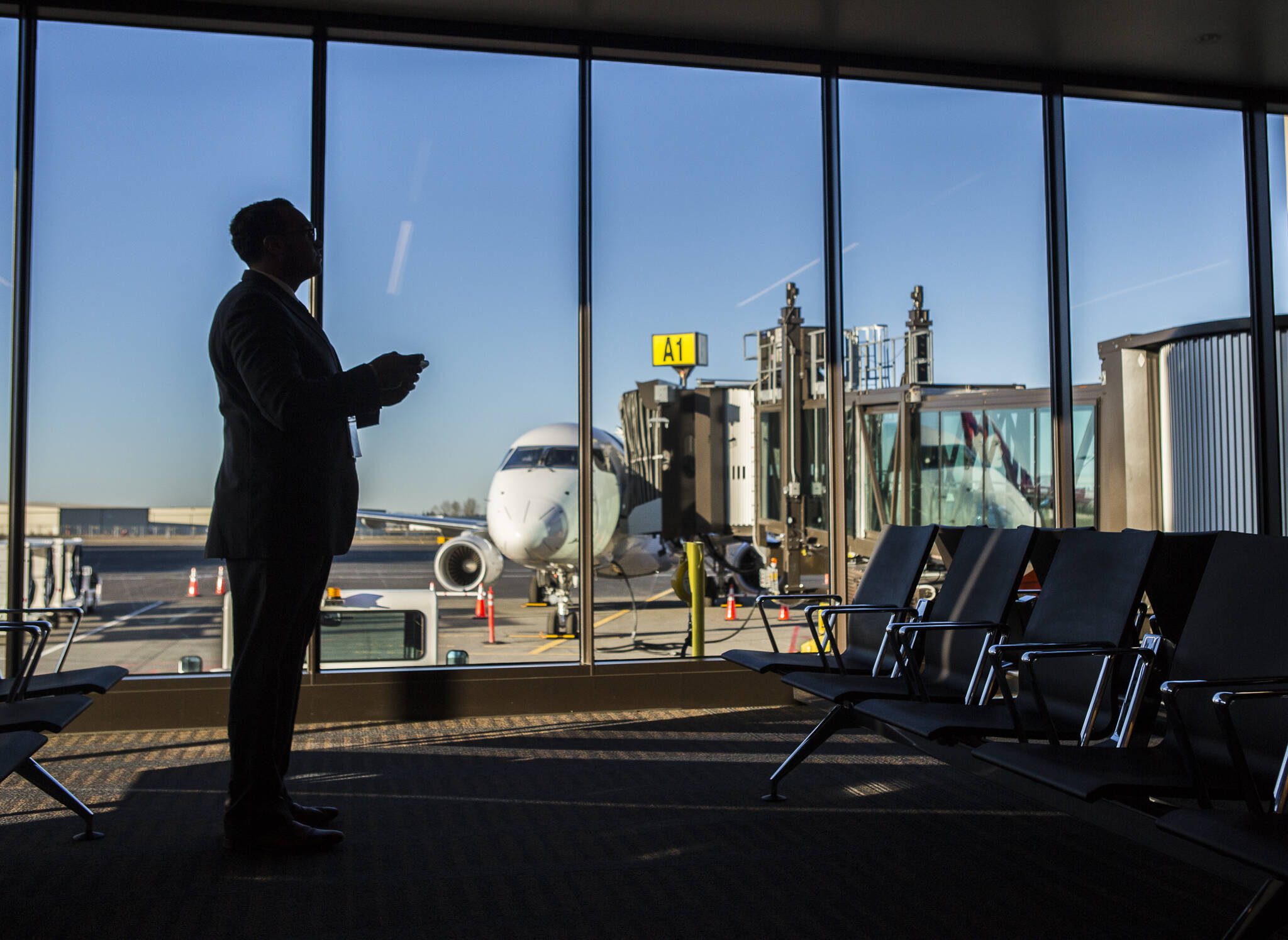By The Herald Editorial Board
Following opposition to initial conclusions and proposals from a first attempt to identify sites for a new major airport that would ease expected growth in demand at Sea-Tac International Airport and Everett’s Paine Field, authorization for further study by a new panel has passed the Legislature and is on its way to the governor’s desk.
Even before its work had officially concluded, significant opposition to three sites identified in a report by the Commercial Aviation Coordinating Commission — two in Pierce County and one in Thurston County near Olympia — was enough to prompt legislation to wave off its final approach and begin a renewed search for a new airport location, this time by a “work group” of 19 voting members appointed by the governor.
Just to reiterate for the members of that work group: Expansion of Paine Field —significant enough to meet the expected needs for passenger and air freight operations as a second major airport — shouldn’t even warrant “Hey, what about …?” consideration.
That statement bears repeating, apparently, considering a caveat in the current legislation.
House Bill 1791, in establishing this second look, was clear in its intention — if not in specificity by name — to exclude expansion of existing port- or county-owned airports in “a county with a population of 2,000,000 or greater.” The list of Washington state counties with populations of 2 million is short: It’s King County.
So, airports in King County are specifically off the list for the new study; Paine Field in Snohomish County — population 840,000 — is not, at least not technically.
There’s substantial reason to take pains to look elsewhere than Paine, and it’s why it wasn’t given serious consideration in the first review: Paine Field’s economic clout.
A 2020 study by the state Department of Transportation, looking at the economic impact of all airports in the state, found that Paine Field annually supported more than 158,000 jobs, providing labor income of more than $13 billion and total business revenue of $59.9 billion for 2018. Those figures take on added significance when one considers that Paine Field’s $60 billion in economic impacts represents 56 percent of the combined economic impact of all airports in the state — including Sea-Tac — at $107 billion. Sea-Tac, itself, takes second place to Paine, with $20 billion in business revenue, a third of Paine Field’s.
Snohomish County Executive Dave Somers at his recent state of the county address made exactly that point.
“If you asked anyone on the street which (airport) was more economically viable, they’d probably say Sea-Tac,” he said. “But it’s Paine Field by a factor of three.”
That revenue, workforce and employment income, of course, is credited to Boeing and other aerospace, manufacturing, general aviation and other commercial services at Paine Field, he said, and too valuable to displace, even for a larger airport.
Paine Field “is an extremely productive and valuable asset as a job center and manufacturing and aerospace hub,” Somers said prior to his address. “We definitely want to balance that and not lose what we’ve got.”
County and airport leaders are continuing their own work to balance that future for aerospace manufacturing, innovation and service and its own commercial passenger airport terminal with completion of an airport master plan scheduled for later this year.
Paine Field’s terminal, run by Propeller Airports, will see growth from the 1 million who passed through its gates in its first year of operation in 2019. A report that was part of the master plan process anticipates as many as 4.3 million annual passengers by 2040, but even that won’t likely be sufficient to meet demand for passenger flights and air cargo for the region in coming decades, which is why the search for another major airport is necessary.
Findings by the first airport commission found that plans for expansion and redevelopment at Paine Field and Sea-Tac could increase total passenger capacity from 50 million currently to about 67 million by 2030. But demand by 2050 could increase to 94 million passengers, while air cargo demand is expected to grow from 610,000 tons before the pandemic to 1.4 million tons by 2050, according to a Seattle Times report.
It’s much easier, of course, to identify where an airport won’t work; lands that already are productive for industry, agriculture and working forestland — let alone residential communities, parkland and environmentally sensitive areas — make their own convincing cases for exclusion from consideration.
A look beyond the Puget Sound region may be necessary. Proponents in Yakima have suggested its consideration recently, the Yakima Herald-Republic has reported. Others have suggested Moses Lake, though airports at either would require transportation connections to the Puget Sound’s population centers.
The first commission’s review of sites was constrained to look for opportunities within 100 miles of Seattle. If a second search for possibilities is expected to come to conclusions other than what the first effort found — only to have its findings rejected — looking outside of that 100-mile box may be necessary.
Talk to us
> Give us your news tips.
> Send us a letter to the editor.
> More Herald contact information.

























